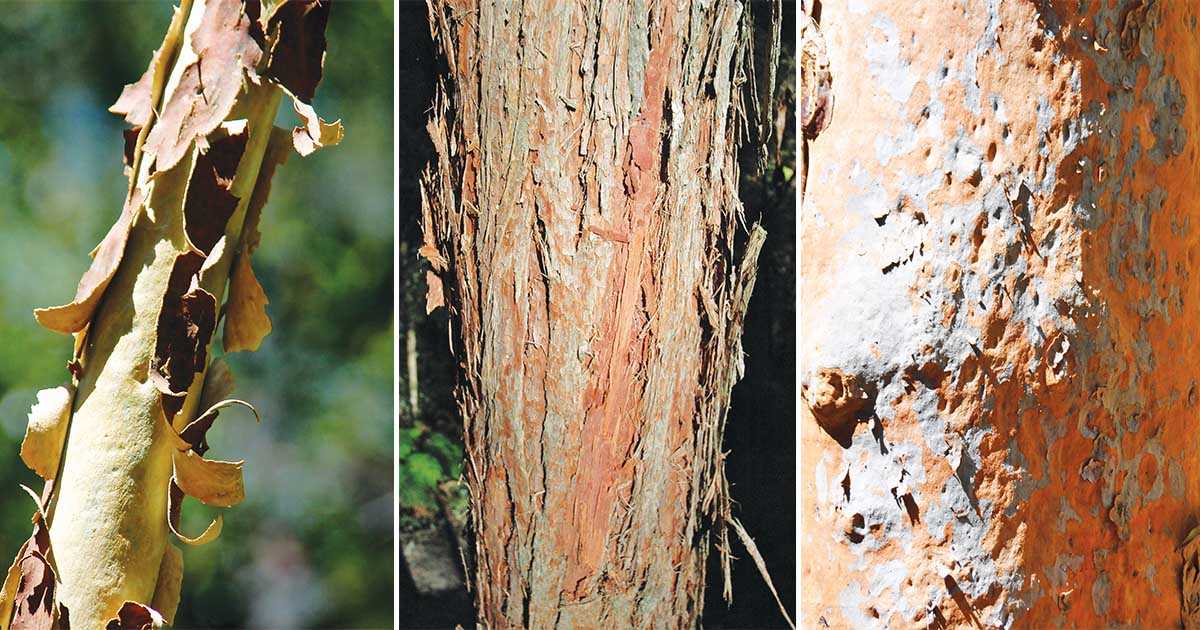By Lachlan Turner
Everybody knows that trees have bark. There are almost as many variations in bark as there are trees and shrubs. Often a tree gains its name from the description given to its tree barks.
Examples would be:
- Scribbly Gum (Eucalyptus Haemastoma), (see February’s column), where an insect burrows just under the surface, finding a source of food in or under this top layer of bark. leaving a wriggly trail on the surface;
- Black Butt (Eucalyptus Pilularis), where the dark fibrous bark at the base of the trunk appears to have been subject to a bushfire and the burnt colour is retained for quite a distance up the trunk;
- Stringy Bark (Eucalyptus Agglomerate), which refers to the stringy fibrous nature of the bark which if pulled from the tree reveals a reddish colour beneath the grey exterior.

Some trees visibly shed their bark completely every year, usually during spring when the new growth commences. The manner in which the old season’s bark is shed can produce interesting colours and patterns depending on the type of tree.
In some cases, last season’s bark, if it is quite thin, will dry out and flake off the tree and fall in long sheets revealing the new coloured bark underneath. One such species is a variety of Angophora where the new bark is a bright orange.
In some trees, lightly scraping away the old flakey bark reveals a totally new coloured bark underneath. This is the case with Geebungs (Persoonia species) and Paperbarks (Mellaleuca quinquenervia) in particular. The bark of a mature Old Man Banksia (Banksia serrata) is distinctively globular in formation and relatively cork like.
There are occasions when a tree will emit a sappy gum-like liquid in its attempt to counteract an insect infestation. This may give the appearance that the tree is bleeding.
Table of Contents
Toggle








